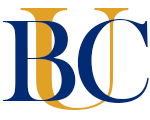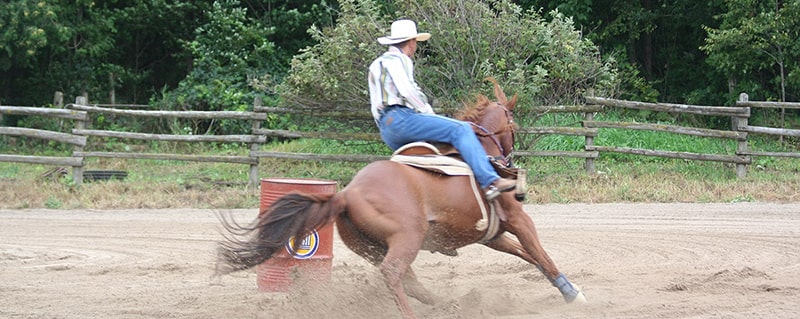At the experienced age of 60, I decided to take up barrel racing. It’s a competitive event where you ride a horse in a clover-leaf pattern around three barrels. Your score is based on the time to run the pattern and you lose points if you touch a barrel, knock one over or fall off of your horse.
To begin to even think about winning doesn’t happen overnight. There were many struggles and there will be many more. One of mine was that I could never keep my balance in the saddle – which, as it happens, is pretty important. I rode six horses, worked with five trainers, used four saddles, over three years, went through two riding stables, and probably a partridge in a pear tree….
In early 2019 I met Kelly, a 26-year-old trainer. She’d been around horses for about 18 years. A couple of years ago Kelly had been kicked by a rearing stallion. This broke eleven bones in her face and caused her to lose her sense of smell, but not her love for life or horses.
Kelly always saw the good in my efforts – throughout any lesson, she would tell me, “I love that you did this! Was it perfect? No. But I’ll take it over the alternative!” Or, “This is what it means to the horse when you do this… which is why I want you to be very careful and do that…” Always with the praise and always with the “here’s why or here’s how you might improve.” She never asks me to be excellent on the first run, walk, or trot. What she is looking for are the small wins and the bringing together of all of the components.
Then, just when I thought I had it all together, she would add another layer.
What kept me working with Kelly was more than just her attitude. It was also a trend that started with something that happened during my very first lesson with her. Kelly noticed my struggles with balance and the saddle slipping sideways, leaving me at the risk of looking like Dudley Do-Right, hanging upside down and having a unique view of the world through the front legs of a galloping horse.
No matter what other trainers had tried, like tightening the cinch, changing saddles, adjusting pads, and so on, the saddle slipped. The saddle horn would also hit me in the stomach. Not fun. Painful, even. Kelly stopped me and had me stand straight up in the stirrups. “Looking good,” she said. “Now, sit straight down where you are.” “Good. Notice that you are not touching the front or back of the saddle? Use your ab muscles and keep that position while you ride.”
That one simple tweak from her has fixed many, many issues. In fact, several times Kelly has stopped me and tightened the cinch saying, “You know that cinch had an inch of space between it and the horse’s belly? That’s a testament to your ability to maintain your balance!”
Each of you that read this will have your own takeaways. The one that I want to focus on is that as a leader, manager, or supervisor you are also a coach and a mentor. Kelly’s title is ‘trainer’, but she has become my coach and mentor. A coach shows or tells people what they want them to do. A mentor asks questions until the student comes to their own realization about what is right. Coaches and mentors carefully observe people so that they can see what is working, what isn’t, and why.
And then they work with their people to improve them.
The best supervisor and managers are coaches and mentors. They look for the one thing that can improve an employee’s performance. They dig deep to see what the core problem is then they work on that with the employee.
Whether it’s pipefitting, lifting heavy loads, loading pigs into a pipeline, moving heavy iron on a drilling rig, lighting a torch, cutting wood, communicating with others, discussing plans, whatever your people are doing, there is always one thing that can help them improve.
Once they have learned and practiced that ‘one thing’, there will be another ‘one thing’.
And another.
Getting the best out of people isn’t a goal – it’s a result. It’s the result of working together observing, asking, listening, coaching, and mentoring.
The best managers carefully and consistently observe their people in order to find one thing they can work together on to improve employee performance right now. If you have a manager or employee struggling then look for the one thing that is the root of their problems and work on that. You might be surprised at how other issues fall away and how rapidly they improve.
If you want ideas on how to determine what a struggling manager or supervisor needs help with this is the link to the first of a series on that.

